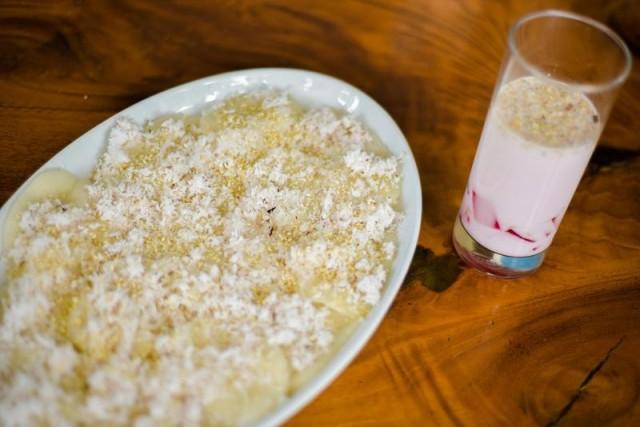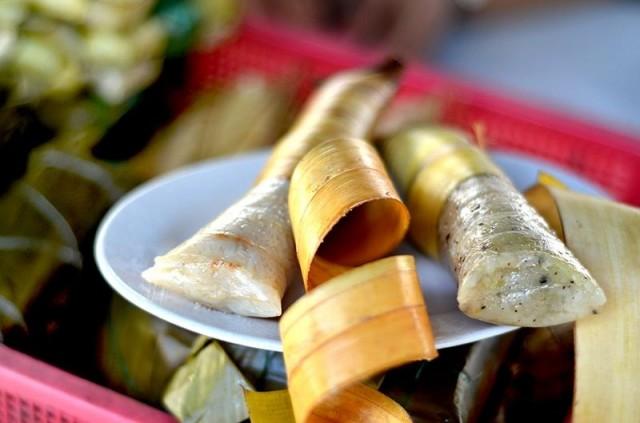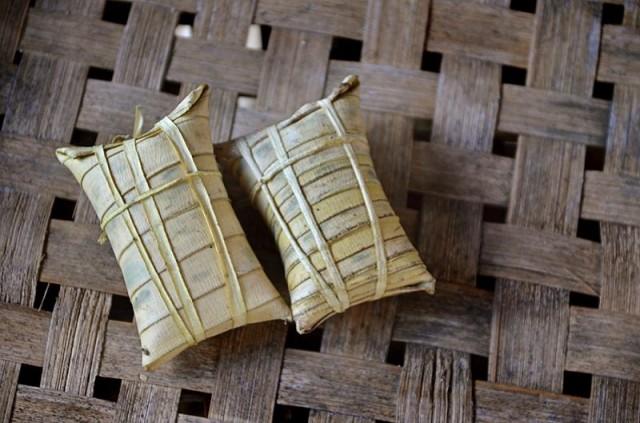Here's why there's so much Patulbad and Ginilu in Pampanga during Holy Week
Pampanga is a well-known place for great food. It's a culinary center not because it has famous Kapampangan celebrity chefs but because cooking good food in Pampanga is a way of life.
It can be traced back to the Spanish era, when locals who were servants to the colonizers assisted the Augustinian and Benedictine priests in the kitchen to prepare sumptuous meals for their elite visitors during the day.
Pampanga's great plane of rice paddies that supplied rice and sugar to Manila between 17 to the 19th century was fertile enough to grow all possible ingredients for a great meal.
But much like all things food, In Pampanga, fasting and abstinence does not feel like the sacrifice that they are.
Check out Patulbad, a type of suman made out of dripped lakatan and Ginilu, a refreshing beverage made out of pigang ngungut aka coconut milk.

Kapampangans especially in the region of Candaba, Mexico and Arayat prepare this as the food of the Maleldo (Mahal na Araw ). And there's a rational in it.
In the early days when the casamac (farmers) were the magdarame (flagellants) during Holy Week, patulbad and ginilu were their food for the soul.
The casamac started the flagellation in the colonial period because they cannot find any atonement that would equate the sufferings of Christ other than to let themselves bleed.
Faith is sincere and dedication was absolute as they were scared that if they don't show their extreme devotion to the Catholic religion, their feudal lords will take away the land they till.
Now, how did the patulbad and ginilu entered the scenario?
Eating pork is a cardinal sin during holy week. But after days of dripping blood, the magdarame needed to eat food to get their energy up. Because ginilu and patulbad are made out of rice (galapung) and coconut — essentially their harvest — it became the key food that could supplement them from hunger.

Trixie Pelayo is a millennial Kapampangan who believes that maintaining the Kapampangan recipe of her ancestors will preserve the integrity of the food. "I believe in the fusion in cooking but if you want to maintain the authenticity of the food, you need to stick to the way it was prepared by our ancestors," she said.
A graduate of one of Pampanga's top culinary schools, Trixie has joined several cooking competitions to demonstrate how the patulbad and ginilu were prepared in the old days.
Pelayo, in order to show her heirloom recipe would prepare all the ingredients a day before. She would ordered the galapung a day in advance and painstakingly squeeze the coconut milk from shredded coconut meat to produce the juice. It's exactly the way her ancestors did it.
"After all, the reason why the food lasted until to this generation is that our ancestors prepared them delicious and we inherited that," she said.

"When we were kids, Friday is the day where all relatives are in my grandparents' house. Since we cannot eat any food that has pork meat, I grew up on the same food which we make until now. The suman banus (suman with a little monggo mixture), the patulbad, the ginilu and the taramindu (sweetened caramelized tamarind boiled with browned sugar ) were the only food available on the table that we could to consume," Pelayo recalls.
Of course, given the many dialects of the province, there are many ways Pampangueños refer to their kakanin. In Guagua, patulbad is pepalto, while in other parts of the region, it's bilu bilu.
But whatever the differences, the rituals, observation of the Catholic practices, and their deliciousness unify them all. — LA, GMA News




